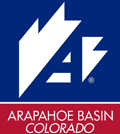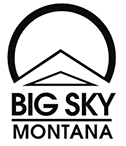Would You Like a Side of Sidecountry With Your Ski Resort?
Today’s topic is side-country — or is it sidecountry? — skiing and snowboarding.
First off, the term is a misnomer, cooked up some years ago by some well-meaning individual as a means to differentiate between way-out-there terrain accessible only by hours of skinning or hiking and that ever-so-enticing terrain that lies just beyond a ski area’s boundary.
It should be called lift-accessed backcountry skiing and boarding.
Because once you pass through the access, or to be more precise, exit gates, you are leaving the world of managed snow, i.e., the ski resort, and into the realm of wild and wooly, where avalanches, unmarked hazards and other terrain traps await the unprepared and/or unschooled rider. The local ski patrol may not be readily available to rescue you if you get into a pickle.
So it behooves a person who wishes to sample some lift-accessed backcountry to be fairly well-versed in the art of reading the snow and terrain. To be equipped with a pack containing the basic avalanche rescue tools (shovel, transceiver, probe). To be somewhat gregarious and ski with a friend or two.
You know, the same rules of engagement you would follow in regular backcountry skiing.
Having said all that, the following are five different side-country, oops, I mean lift-accessed backcountry experiences available at American resorts.
Mt. Judah to Donner Lake
Sugar Bowl has several access points to backcountry adventure — the California resort even sells one ride lift tickets — but one of the most popular is the so-called Lake Run. Starting from Mt. Judah, a skier or snowboarder is looking at a 2,200-foot vertical descent to Donner Lake, with a little side trek through the old railroad snow sheds built in the 19th and early 20th centuries. Because there is no parking once you reach the lake, you’ll have to arrange for someone to pick you up. Or you could thumb a ride up old Highway 40 back to Sugar Bowl.
Flower Point
At the top of Whitefish’s Flower Point chair and just beyond the resort boundary line lies the popular area known by the locals as The Canyon. It’s fairly straightforward tree and glade skiing and snowboarding on some delicious Montana snow. And the trip back to the resort is fairly easy, too: Just hike left — or catch a ride from a passing snowmobiled — on the Forest Service road at the bottom and it will bring you back to the ridge marking Whitefish’s boundary.
Fantasy Ridge
At the southeast end of Solitude’s Honeycomb Canyon rises the impressive face of Black Bess Peak, which is lined with several chutes filled with Utah’s finest product. To access these chutes, you have to climb Fantasy Ridge, a knife-edge arete that often requires the use of all four limbs to ascend. The pucker factor is high, and if you succumb to the urge to lower the restraint bar on the Summit Express, which is how you access the beginning of the climb, you probably should reconsider things.
Brackett Basin
This may sound slightly weird, but there is decent, extensive even, lift-accessed backcountry terrain in the Northeast, and Sugarloaf in Maine may have the most of it. Brackett Basin, with its chutes, steep gladed areas and cliffs, is easily accessible from the King Pine lift. Because avi danger is not much of an issue here, a full-on backcountry pack is not deemed a necessity, but carrying a fully-charged cell phone is.
Silverton
An entire ski resort in Colorado is dedicated to the backcountry experience and that is Silverton. There is only one lift there — a double chair that rises 1,900 vertical feet — to give access to 1,819 acres of the steepest and wildest terrain in the Centennial State. And because the only snow moving Silverton does is avalanche mitigation work, the snow there is laid down as Mother Nature intended. Oh yeah, before you load the lift you have to be in possession of a complete avi pack (shovel, transceiver, probe).
Featured Resorts

Killington Resort

Pico Mountain

Mammoth Mountain

Palisades Tahoe

Arapahoe Basin

Aspen Snowmass

Sugarloaf

Sunday River

The Highlands

Boyne Mountain

Big Sky

Diamond Peak Ski Resort

Titus Mountain

